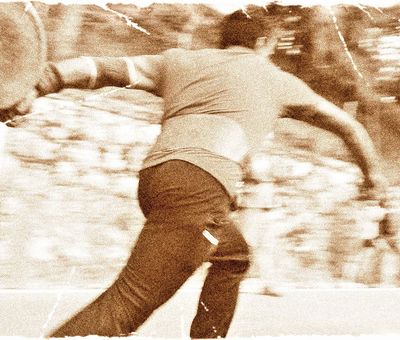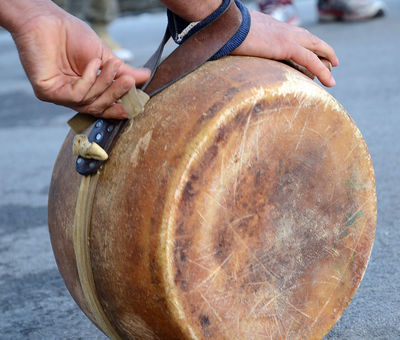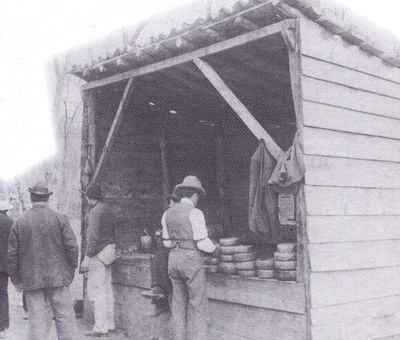Hurling the block
Once he hurled a block from Castiglione to the Pontecosi Lake – a thirty-kilo block! It passed over the Cerreto plain, so there was a bit of downward motion, but still, that must be a distance of 10 kilometers! And it only stopped because it landed in the lake – it bounced up and down like a stone and only then sank. Egisto was the greatest thrower of all time – specifically, in the sport of cheese rolling – and he was born right here in Pieve Fosciana, next to the Church of San Magno. People tell dozens of stories like this about him – he’s our local hero. No one ever took down his exact measurements, not even in challenges with other towns. People would send children with fevers to the front of his house; elderly ladies wouold rattle their pots and pans the night before the competitions. Egisto, if he got angry, would perform worse. All right, he could muck up a throw if he were tired, but he was actually worse! The pecorino block tumbled through the fields, bursting through farms, injuring passersby, knocking down cows, blowing fences to smithereens…
Strength is nothing without control
Egisto was perhaps the most power and brutal of our compatriots. His biceps had a circumference of 90 centimeters, he drank three liters of wine per day and ate two whole chickens, eight eggs and thirty sausages; his yell could make the walls tremble; his laugh echoed all the way out to the Lunigiana and the valley residents were afraid of him, viewing him almost as an ogre. But he was also a first-rate block roller: there wasn’t just a deadly violence to his movement – his technique was super refined. He would carefully choose the blocks to roll, staking them out with a watchmaker’s hammer. So he’d encircle them with a delicate touch, rolling the tricciolo (a plait of hemp) tightly and intricately around the edge, inserted his hand in the manetta (another crucial step) and adjusted the briolo (a 5- to 7-cm piece of wood which goes between a player’s index and middle fingers), to keep his grip as steady as possible during the initial stage of throwing it. Then he would weigh the block, lift his arm up another time, as if he still needed to test out his inconceivable strength, and at that point he’d be ready to sfunare, as they say around these parts – meaning to hurl it ceremoniously.
"There it is, there it is!"
After that Egisto would bring the cheese up to shoulder level, then hoist himself up, take a quick step and then let go of the booming, giant pecorino disc, setting it on a journey that no one would never see end. The instability provoked by Pieve Fosciana’s hero’s throws was so severe that the nearby towns – we’re talking during the 1800s – prohibited the game one by one. Egisto would pass through and the day after an edict would go out saying “the game of trottola, cheese block or ‘tumbling’ is banned forever by X Civility Society within the town of Vergemoli,” two months later he’d arrive in Palleroso and here they’d denounce “grave damages to existing factories of yonder, but also dangers to land wanderers or foresters, who, actually, days ago or so a young woman who was moving through the streets was struck down by a blow from a cheese block, leaving her stunned on the ground, with related bruises.”
In a short amount of time, Egisto’s exploits got the game banned throughout the whole Garfagnana, at least on paper… because in the breeziest spring evenings, under immense and beautiful skies, the blocks of cheese have continued to fly through the streets even up to the present day.







